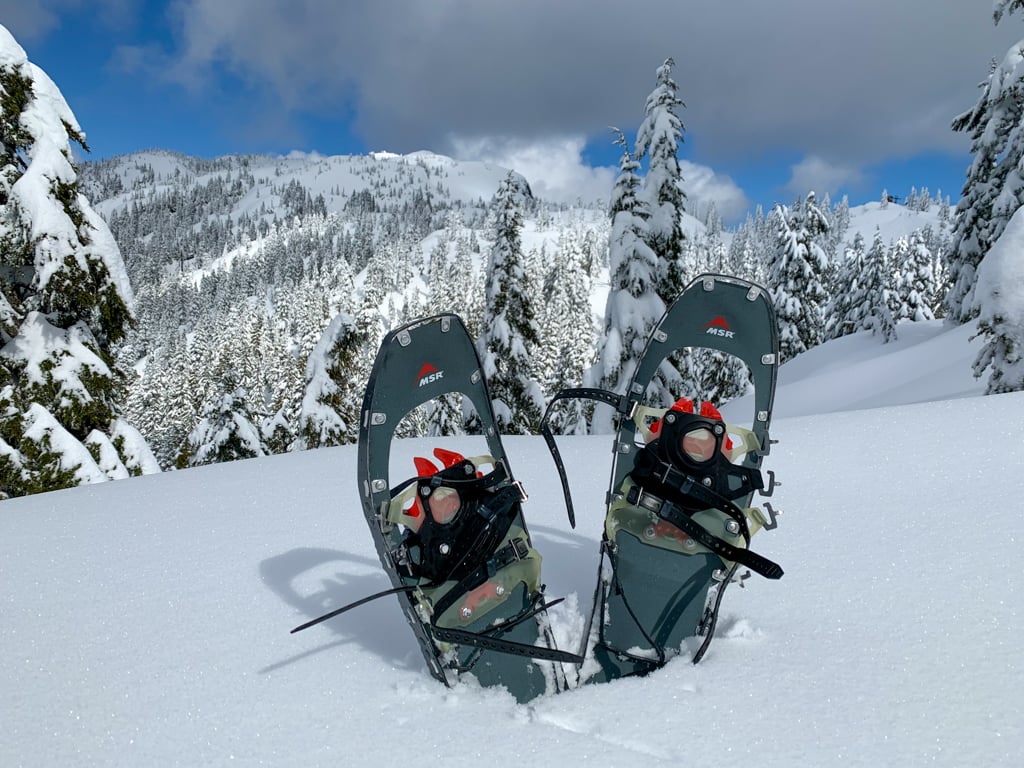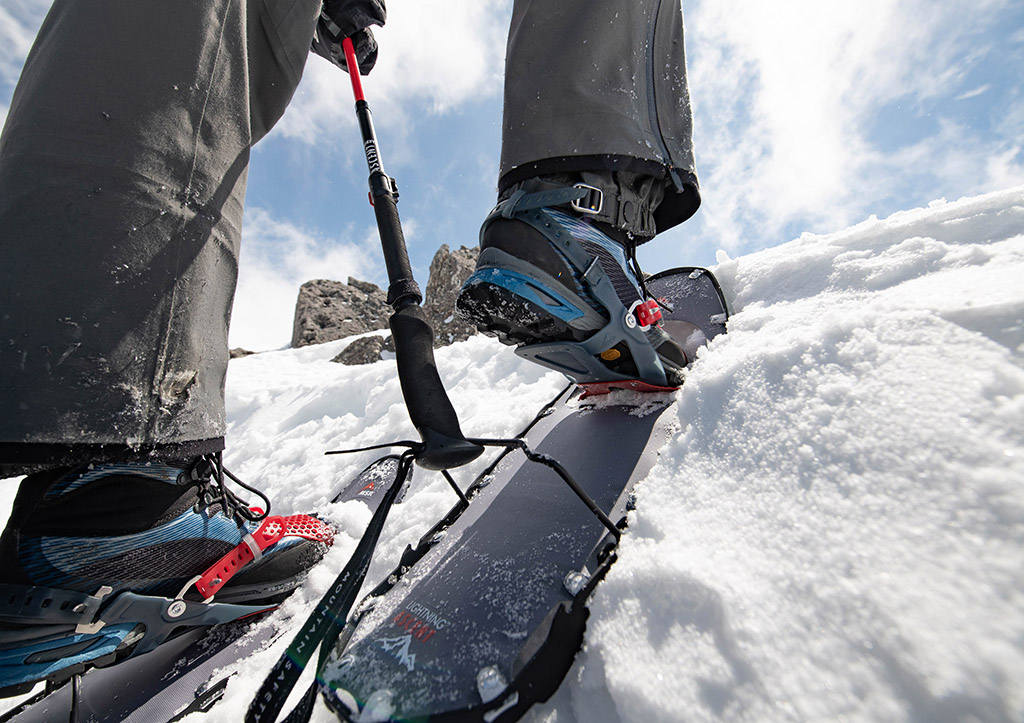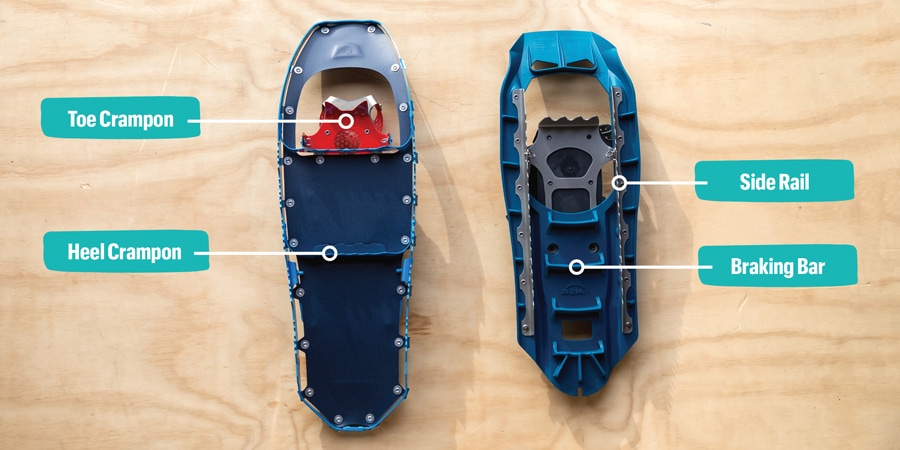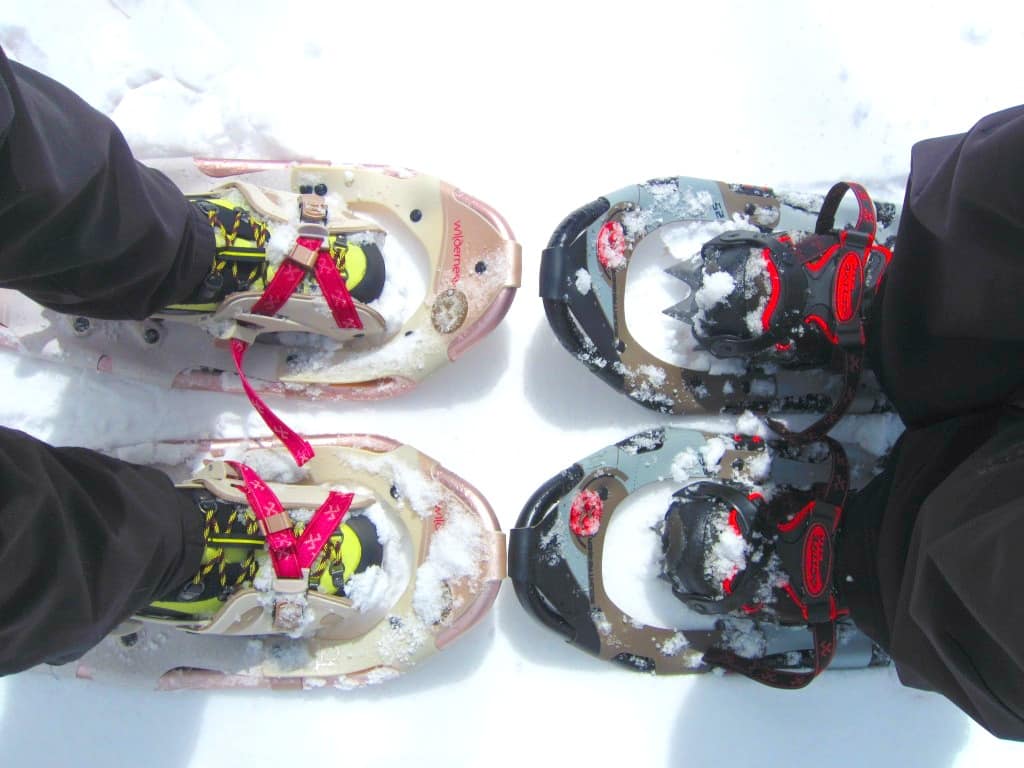How To Choose Snowshoes
Snowshoes with a smaller surface area tend to have difficulty in very deep snow especially powder snow thats light and dry. Kids snowshoes are made according to age with the smaller sizes intended only for playing and the larger ones offering the same technical designs as adult shoes do.
 Definitive Guide How To Choose The Perfect Snowshoes For Your Needs
Definitive Guide How To Choose The Perfect Snowshoes For Your Needs
Make sure to bring your snowshoe boots with you when trying snowshoes.
How to choose snowshoes. A big part of snowshoeing is getting the right boot and making sure it fits your snowshoes. Snowshoe size is a key factor in getting the right amount of flotation. The benefits that you will get if you these snowshoes are listed down below.
Your feet are in the snow and you need to keep them dry. Snowshoeing is simple easy to access and super fun. For softer snow choose at least 10 cm longer pole.
When choosing snowshoe poles follow the size chart of walking poles. Snowshoeing is a superb activity that means you can enjoy hiking year-round. When choosing your snowshoes dont cheap out on them and be wary of ones that are priced under 100.
If you snowshoe where the snow is deep and powdery choose a larger snowshoe than if you snowshoe in icy conditions or groomed tracks. Flat trails steep mountains or snowshoe running. The bigger the person is the larger the snowshoes must be to carry the entire load.
Consider your weight the gear you are carrying the snow conditions and your gender. The capacity that your snowshoes can handle which is your weight and the equipment is the recommended load. When it comes to the outdoor kit we always recommend that you go for quality due to your clothing and accessories being exposed to the elements.
Choose larger snowshoes for light powdery snow they will help keep you afloat. You can use smaller tight shoes for hard compact snow. The most crucial aspect when selecting the volume of the snowshoes is the weight.
It has a durable and strong binding. It has a climbing style traction system. The Trail Series is best suited to flat or rolling terrain the Explore Series excels at off-trail travel and puts a priority on comfort and fast easy use.
Our staff member explains how to choose the right snowshoe for your needs in this REI Expert Advice Vide. Choose your snowshoes based first on the terrain you plan on being in most often. And the Ascent Series is perfect for mountain travel.
Snowshoes are generally designed for flat rolling or mountain terrain so where you go will help determine what youll buy. How big a shoe you need depends on the conditions where you snowshoe. Choose top snowshoes for fast powdery snow.
Most manufacturers make recommendations based on your weight plus the weight of the gear youll be carrying such as a backpack. Snowshoes come in a range of sizes from about 20 to 36 inches in length and the proper size depends on two things. For choosing a boot to snowshoe in we think the most important thing with your boots are they are waterproof.
Theyll help you stay afloat. The one you choose usually comes down to personal preference and fit. To help limit sinking in deep light powder snow youll want to look for snowshoes with a wide decking covering the snowshoe.
To choose the right snowshoes youll want to factor in three simple things. For steep icy surfaces use smaller snowshoes as well. Snowshoe bindings are made to fit over most hiking and winter boots.
If you want to blaze the snow trails then these snowshoes should be definitely in your checklist. For proper snowshoe sizing you need to consider both the maximum load on your snowshoes your body weight plus the gear you are carrying and the type of terrain you will be navigating. This is one of the most important factors to take into account when purchasing snowshoes.
Bindings The incorrect bindings on a shoe can be the deciding factor between a really good or a really bad purchase. Also think about the type of snow and the lot it will go through. If you plan to wear snowboarding or mountaineering boots make sure the binding will fit with the extra width or length.
The length of a walking pole should be approximately 068 x your length which is appropriate for harder snow. Weight including any pack or gear being carried Every snowshoe comes with a recommended weight range for that shoe. Which snowshoe materials you should choose.
Have an idea of where you plan to go. There are two main types of. Finally snowshoe sizes do vary by gender.
What size snowshoes you should buy. Have an estimate of how much you and your gear weigh. Snowshoe specs should list the overall weight total.
A user of 180 cm should thus have a pole of 125-130 cm. How to choose snowshoes for the terrain. You can go with smaller more compact shoes for hard packed-down snow.
 How To Choose Snowshoes The Outdoor Gear Exchange Blog
How To Choose Snowshoes The Outdoor Gear Exchange Blog
 How To Choose Snowshoes A Complete Guide Happiest Outdoors
How To Choose Snowshoes A Complete Guide Happiest Outdoors
 How To Choose Snowshoes Terrain Size Special Features Msr Blog
How To Choose Snowshoes Terrain Size Special Features Msr Blog
 How To Choose Snowshoes Making Sure The Snowshoes Actually Fit
How To Choose Snowshoes Making Sure The Snowshoes Actually Fit
 How To Choose Snowshoes 14 Steps With Pictures Wikihow
How To Choose Snowshoes 14 Steps With Pictures Wikihow
 How To Choose Snowshoes A First Time Guide Gearjunkie
How To Choose Snowshoes A First Time Guide Gearjunkie
 How To Pick The Right Snowshoes For Adults Yukon Charlies
How To Pick The Right Snowshoes For Adults Yukon Charlies
How To Pick The Right Snowshoes For You
How To Choose A Pair Of Snowshoes Just Trails
 How To Choose The Right Snowshoes Goeast
How To Choose The Right Snowshoes Goeast
 Snowshoes How To Choose Rei Co Op
Snowshoes How To Choose Rei Co Op
 How To Choose Snowshoes 14 Steps With Pictures Wikihow
How To Choose Snowshoes 14 Steps With Pictures Wikihow
 How To Choose Snowshoes A First Time Guide Gearjunkie
How To Choose Snowshoes A First Time Guide Gearjunkie
 How To Choose Snowshoes Expert Tips To Purchase The Best Ones
How To Choose Snowshoes Expert Tips To Purchase The Best Ones
Comments
Post a Comment